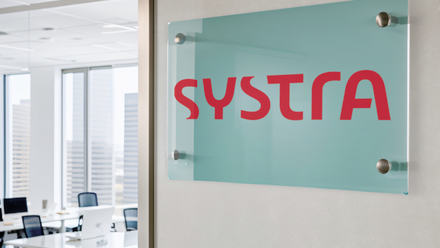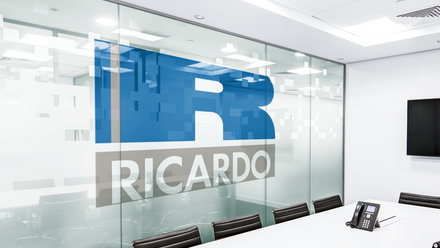DSE Workstation Assessor (enricoSmog)
About the course
If you want a non-technical approach to carrying out effective DSE ergonomic workstation assessments this is the course for you.
Who should attend?
- Does not matter if you are a newbie, or an assessor with a number of years of experience. You might be needing to assess 30 staff or you may be a looking for the best way to assess 000s of staff. The course is open to anybody, you just need to be keen and motivated – we will take care of the rest.
- If you have experience and have completed a DSE assessor course before then you may want to attend our CIEHF-accredited Advanced DSE ergonomic assessor course instead.
- The focus of our DSE assessor training course is to be proactive as opposed to being reactive to the ergonomic challenges of office work in the 21st century.
Why should you attend?
- We have major clients from around the world that come to back to us because our training is effective and long lasting, staff return motivated, keen and able to do very effective assessments.
- You will learn lots, what’s more what you learn will be of immense benefit to you, your family as well as staff at your company. It will also make you a popular person as you begin to resolve DSE users pain and discomfort, this will make your employer happy as you start to make cost savings by knowing what to buy which will reduce the need to hire expensive consultants for standard assessments.
- Our DSE assessment training course is regularly updated to take into account new research and good practice.
What you will learn
- To be a competent and confident assessor able to carry out DSE assessments in accordance with current European legislation and HSE guidance and good practice.
- You will be able to check that the computer equipment is suitable for the DSE user and that the workstation is compliant with ergonomic standards and principles.
- How musculoskeletal injuries occur and how they can be prevented - human anatomy is simplified so that you will understand the causes of discomfort and pain and carry out assessment for workers with musculoskeletal pain.
- You will learn about the causes of stress – physical, cognitive and organisational.
- How to use simple documentation to carry out DSE ergonomic evaluations and incorporate what is learnt into your office ergonomics programme.
- Case studies build up the new DSE workstation training assessors skills as a DSE ergonomic assessor and will reinforce learning objectives.
- Provide advice to the DSE user so that they can avoid the risk of physical, visual and stress discomfort.
- Be equipped with a solid understanding of the DSE assessment process, which is backed up in the accompanying handbook (a workbook, not copies of slides).
- Know how to select equipment, and know when to exceed the basic requirements. This knowledge is essential as without it you may buy things that were not necessary. This knowledge will save your company £000s.
Expected outcomes
Delegates will be:
- Competent to carry out DSE assessments.
- Confident in the use of DSE checklists as the basis of the assessment.
- Able to provide training to the user to safely use the equipment, organise work, and how to adopt a neutral posture.
- Have an understanding of ergonomic principles, standards and guidance in relation to DSE workstations and office work.
Course duration – 1 day
- Pre-course work - none
- Training day (Full day)
- Post-course work (1.5 hours)
Clear instructions and supplementary materials are given to complete the post course assessment.
Course content
- Competent to carry out DSE assessments.
- Confident in the use of DSE checklists as the basis of the assessment.
- Able to provide training to the user to safely use the equipment, organise work, and how to adopt a neutral posture.
- Have an understanding of ergonomic principles, standards and guidance in relation to DSE workstations and office work.
- Course objectives and CIEHF accreditation
- Basics and definitions
- Role of DSE assessor and level of competence
- Video of assessment and critiquing to ensure not working on poor technique (what is a workstation assessment)
- Video of worker displaying range of assessment (hazard, risk and risk assessment)
- Posture and equipment placement (neutral posture, working height) – simple anatomy and why users experience discomfort and pain (practical sessions)
- Identification of postures and the effect on the body
- Workstation design and placement in accordance with ergonomic principles -sitting, standing etc
- Different types of DSE user
- What is ergonomics?
- Case study practical – summary
- Workplace design and effect on the users behaviour and risk of injury
- Desk shape and height
- Screen and screen set up – 1 – 10 screens and ins and outs of eye issues
- Self-adjustments
- Different types of tasks
- Environmental variables – what needs to be assessed (temp, light etc), how and what guidance
- Legislation – DSE regulations and other regulations relevant
- Hazard awareness
- How the body works and what parts of the body is affected
- What does what and how it works (head to toe)
- How to prevent and design to avoid – ensuring what solution does not cause further problems
- Home and mobile workers
- Specialist assessments: expectant mothers, older and bariatric
- How to select equipment
- How to use the DSE checklist and understanding its limitations
- Demonstration of competence
- Brief on post-course requirements (see below)
Assessment
Competence will be assessed from:
- Completion of the Hazard awareness (AM)
- Completion of the Multi-choice test (PM)
- Submission of the DSE assessment and summary (you will be given three examples of both so you will know exactly what to do)
All our delegates do very well and the assessments reassure us that our very high standards are maintained and that we are meeting the CIEHF expectations.
What’s included?
Course material will be given out during the training day
- The CIEHF DSE assessor handbook (80 pages)
- DSE checklist (PDF and Word)
- DSE user guidance and posture workbook (PDF)
- All test materials
- Lunch and refreshments are included for most public courses
- CIEHF certificate on successful completion of the course
Recommended pre-requisites
It is recommended that each delegate has a copy of:
1. Work with display screen equipment: guidance to the DSE regulations published by the Health and Safety Executive (HSE).
2. The Health and Safety Toolbox published by HSE.
Find out more






